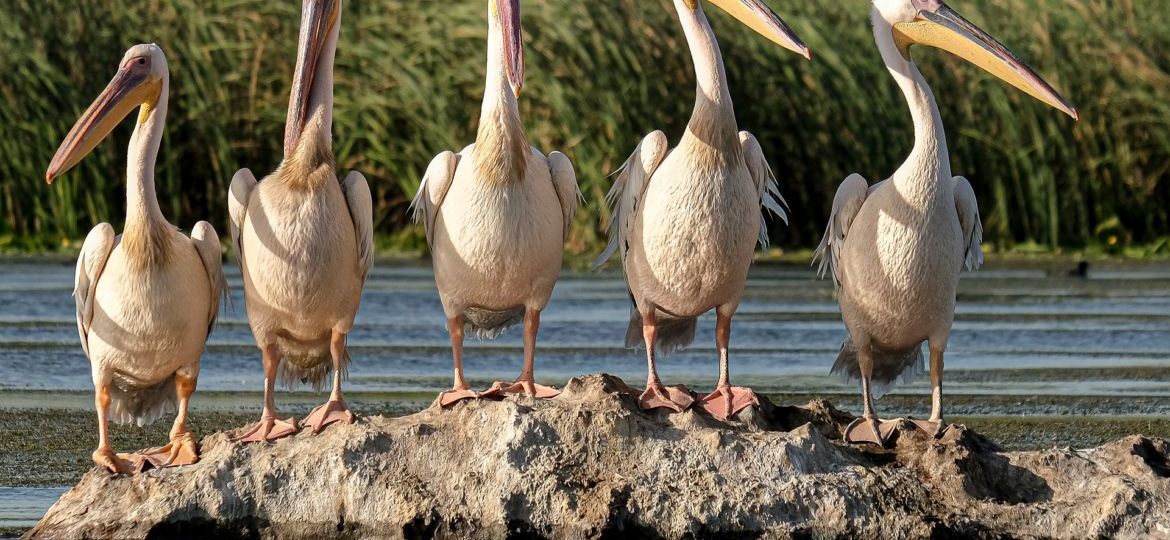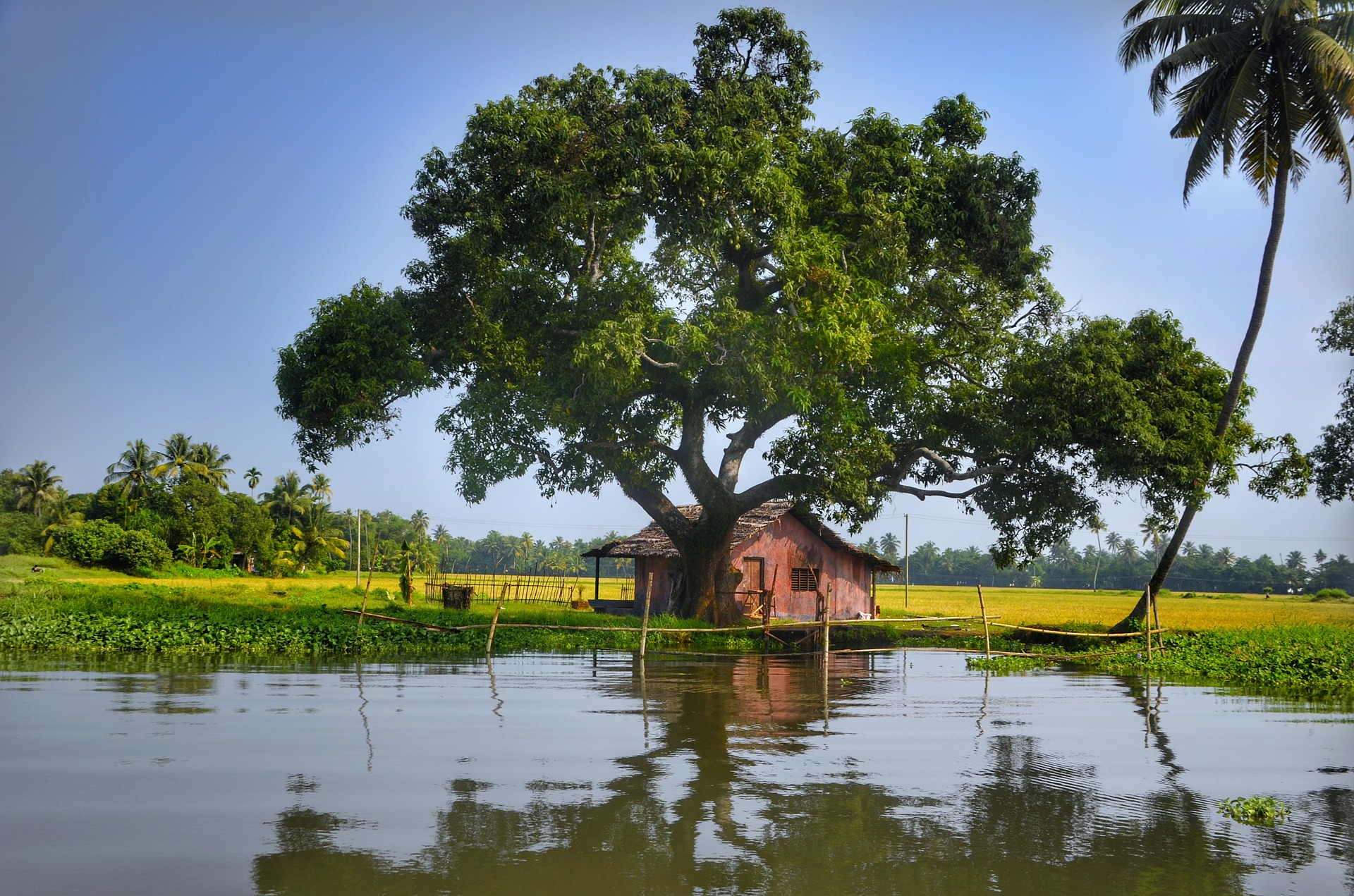
For a while, the debate on Tourism fluctuated between it being an economic savior to an environmental destroyer. In a sense, it is good that finally Tourism is considered more than a detrimental force – as a spoiler of places that left garbage in its wake – literally and metaphorically.
Through the 70’s and 80’s, it was thought of as a negative impact on local cultures, values & traditions and often seen as impacting the environment including the wildlife, be it within National Parks or outside.
The Global leaders and thinkers in the Tourism Industry knew that we could not stop the juggernaut of Tourism and indeed we should not as there is always an innate desire for all to travel and discover, often acting as a balm for our soul. It was felt, to allow the giant called Tourism (now the world’s second-largest industry) walk in such a way that it doesn’t stomp about mindlessly, but retains each foot sensitively in its journey and goes beyond, assisting communities, cultures and the fauna and flora in its path.
Ecotourism was born and became the talisman of the unruly Giant who was being gently coaxed to wander down a path of responsibility and eco consciousness. My friend, Hector Ceballos Lascaurian who is credited with coining the word Ecotourism, defined it as follows:
“Ecotourism is that tourism that involves traveling to relatively undisturbed natural areas with the specific object of studying, admiring and enjoying the scenery and its wild plants and animals, as well as any existing cultural aspects (both past and present) found in these areas. Ecotourism implies a scientific, aesthetic or philosophical approach, although the ‘ecotourist’ is
not required to be a professional scientist, artist or philosopher.”

At this time, the Tourism giant started meeting the amazing ecotourism elves and fairies that would be able to display an experience into the wonderland of things that had never been observed earlier. Much to the amazement of the Giant, some of the other giants too who were earlier stomping around, followed the fairies and the elves, converting them into being friendly and sensitive. They realized that their presence meant so much for the small local communities, in terms of financial revenues that were paid to them for being able to stay, being guided and taught local cuisine. As the Giants admired these small people, with the help of the fairies and
elves, they got a peek into the secret traditions and dances of the fairies and elves and all the amazing animals and plants and the magical creations of our wonderful planet Earth.
This is no different to today’s world of Mass tourism where one can participate in cookie cutter trips, often with a superficial experience of the destination. However, there are a number of options for a tourist to embark upon journeys that are reflective of ecotourism principles and as Hector said ‘to have the ability of immersing him or herself in nature in a way that most people cannot enjoy in their routine, urban existences. This person will eventually acquire a consciousness and knowledge of the natural environment, together with its cultural aspects, that will convert him into somebody keenly involved in conservation issues.’
By 1989, The International Ecotourism Society was launched and they defined Ecotourism as “Responsible travel to natural areas that conserves the environment and improves the well-being of local people.”
The key principles were:
- To allow people to discover and travel to natural areas in a conscious way so that every visitor could make a small difference.
- Minimize the negative impacts of tourism
- Contribute to conservation efforts
- Employ locally and give money back to the community
- Educate visitors about the local environment and culture
- Cooperate with local people to manage natural areas
- Provide a positive experience for both visitor and host
This was an effort at showcasing how tourism with its enormous potential to do good, was the antithesis of mass tourism which generally comprised tourists lazing on crowded beaches with their hotels depleting fresh water reserves in the area. The cultural impacts on the local communities were adverse in such a way that made the locals feel inadequate.

This is also no different to what happened in India, when people in the 1980’s were starting to undertake travels to remoter areas like Ladakh, and it was seen that with the impact of the foreign tourists, the local Ladakhi’s were soon shedding off their traditional dresses and hanging out in denim jeans and T-shirts. They were leaving their families from tilling their farms and helping at home, to doing Tour guiding which brought some angst amongst the families.
However, it was soon realized that the very same foreign tourists were also helping subtly in reaffirming the local communities’ beliefs in their own traditions as they openly admired their dresses, traditions and family values. As the interactions became more intensive, tourists started to look for ways of giving back and helping communities and many years later this was to give rise to Voluntourism or a type of Tourism where the essential component of a Give back, often reflected in Tourists coming and spending weeks sharing their skills, be it teaching in schools or helping with patients at hospitals for the upliftment of the communities. Naturally, local families adapted to this type of a win-win tourism situation and the revenues coming in were not insignificant, so it put the smile back on the family elders.
What Ecotourism was basically doing, was to bring to the Table, a consciousness that allowed even the non-nature based tourists to adopt what is now popularly called Responsible Tourism principles and actions. So even if one was travelling for a general city tour or a non-nature based one, one would still be much more conscious of one’s eco footprint. Thus, for many travellers, they were mentally auditing at every level on what the impact of a person’s visit is – and whether it can help in general or not. Hence, choices of where one stays e.g. is your Hotel following ecofriendly actions or not , is your Tour Company following good environmental actions and is one able to do and carbon offsetting etc are all part of the greater collective of becoming a responsible Traveler.
This in a sense was a direct result of the two key interventions at a global level. One, when the Earth Summit happened in Rio in 1992 which adopted the Agenda 21 of Sustainable Development of the UN and Tourism was to fit into that. In fact, it defined Sustainable Tourism as “Tourism that meets the needs of present tourists and host regions, while protecting and enhancing opportunities for the future.”
This, years later, led to the formulation of the Global Sustainable Tourism Criteria in 2008, a collaborative effort between the UN Foundation and other advocacy groups. The criteria, which are voluntary, involve the following standards: “effective sustainability planning, maximum social and economic benefits for local communities, minimum negative impacts on cultural heritage, and minimum negative impacts on the environment.” (Clarkin and Kähler)
In India, our own journey on the Ecotourism path started way back in the 80’s too, when a small band of us in the Tourism industry were getting alarmed at the site of garbage and lot of tree felling and burning of wood and the plight of the locals who were offering porter duties etc., not to mention the way the general tourists were behaving in National Parks with little respect for Nature & Fauna.
In 1989, a personal turning point made me more of an eco-warrior/pacifist than I had imagined. I was invited to take part in a United Nations Environment Programme (UNEP) supported Arctic environmental expedition called Icewalk. Supported by American & Canadian scientists, we studied the growing Ozone Hole and the tested the ice for pollutants like PCB’s and to our horror we found that not only was the Ozone hole growing but also there were industrial pollutants present in the otherwise pristine Arctic wilderness, thanks to the winds that would bring these from the industrial Americas. These pollutants had seeped into the Arctic waters thus into the krill that in turn was eaten by the seals which was food for the local Inuit’s thereby entering into the human system. Clearly this was a problem of mammoth proportions and it was easy to get depressed by these findings as the world was just about waking up to the environmental impacts that were being caused by us human beings worldwide.
But the big learning and empowerment came by the Polar Explorer Robert Swan who had organized this expedition and communicated in a strong message that this problem was created by us and we therefore must find the solutions and inspired us to believe that each one of us can make a Difference.
So I decided upon my return to try and not only do what we can in the Tourism sector to make it eco-sensitive. Being a mountaineer & explorer, one had been brought up with an innate respect for the world of Outdoors and I knew that first I would have to show by setting a personal example. As I ran Ibex Expeditions, one of India’s pioneering Adventure Travel company, I wanted to also prove the old adage that “good environmental sense is good business sense”. Thus when I took first steps at Ibex Expeditions signing up to the Himalayan Environment Code of good practice, which demanded us to stop campfires, carry out all non-
biodegradable garbage and change from kerosene to solar lanterns, many thought the added costs will make us uncompetitive. But though there was a marginal cost escalation, what we got in return were loyal customers who knew the environment was safe when travelling with us.
Not only this, the other learning was that if explained, the traveler was as much wanting to show the innate human responsiveness and responsibility; to not ask for a Camp fire during Himalayan treks, as they understood that with their action, it “wood” only make the local women walk a lot longer to get back the wood from the forest which they needed to use for cooking.

It was such practices and more that we wanted to bring about in the Travel Industry and this needed to be jointly dealt with by the Government as well as the Industry. So at PATA (the Pacific Asia Travel Association) which was the largest Advocacy group in our part of the world, we started to log in Best practices and keep abreast with Ecotourism developments that were crystallizing worldwide, as a new movement.
In 1998, we helped draft the National Eco Tourism policy for the Government through an interactive process between Government officials, NGOs and the Industry. The idea was to list out the eco-tourism Resources and enumerate the principles that would lead to sensitization for sustainable tourism growth.
PATA’s international Sustainable and Social Responsibility Committee on which I served for many years, made a Travellers Code which also awakened travellers into becoming auditors of the organizations they chose to travel with as well as the lodges/hotels they chose to stay at. Soon, the same committee evolved simple environmental guidelines for airlines, railways, cruise liners, transporters, and National tourism boards.
As this committee made guidelines and honored Companies with its Gold Awards for best practice, the India chapter adopted many of these guidelines for Tour Operators and Hotels and with the help of a very supportive Ministry of Tourism, we were able for the first time, to get the leaders of the Tourism industry to take a public Environmental pledge on the World Environment Day on 7 June 1999.
This led rise to the very healthy interventions at the Industry level after we started putting out a publication called the Environment & Ecotourism Handbook – a practical guide for the Tourism Industry. It contained a wealth of information and now in its 4th edition, this compilation of Do’s and Don’ts, handy facts, best practices, resources etc continues to be the guiding star for many. Whilst the first one was launched in 1999, the latest one was brought out in 2014.
This 4th edition also contains a vital document called the Sustainable Tourism Criteria of India for the Tour Operators and the Hotels and accommodation sectors.
This came about as a result of consultations over a year amongst the Industry stakeholders and the Government. This was based on the Global Sustainable Tourism Criteria (GSTC) and our mission was to adapt it to India, keeping in mind, the diverse geographical regions as well as differing cultural sensitivities.
The Sustainable Tourism Criteria of India was first launched at the UNWTO meeting in Hyderabad in 2013 and once again comprehensively launched on the World Tourism Day in New Delhi on the 27th September 2014.
The impact of this knowledge that was being relentlessly disseminated through meetings, conferences and workshops was showing – first we saw a wonderful experiment of the Kerala Tourism and the Forest Departments coming together to rehabilitate the bark poachers of Periyar and with the help of the Tourism industry there, converted them to become Tourist guides. This was based on a win-win model for all – the Tourists/Wild lifers/Birdwatchers got their in depth knowledge and quality interpretation from these former poachers who also knew exactly where to go and see different types of birds and animals anyway. As for the former poachers they became – to use a cheesy line – from Zero to Hero in the eyes of their community; started to earn much more and in a legal way with their self-esteem skyrocketing too.
Soon, over the Cauvery in Karnataka, the Jungle Lodges Corporation launched a programme of Mahaseer Fishing where guests would use local people as Fishing guides or Gillies, who were locals from the vicinity and were earning from this activity. The Fishing was based on a catch & Release basis so that it was all a sustainable operation, employing ecotourism principles to the hilt and so it became in the interest of the locals to protect the river for Fishing and not bomb it out surreptitiously, as they were earning enough to be able to buy fish from the market!
Elsewhere in Kerala, around the lake of Kumarakom, green hearted Jose Dominic, the visionary behind the CGH Earth Group hotels embarked on an eco-sensitive journey in conceiving resorts where one of the core values was to save heritage homes from being destroyed or sold and reassembled them beautifully against the Vembanad lake in the resort called Coconut Lagoon with all the attendant Eco measures. With a core value of Less is More, he demonstrated this in the Lacadives with his very ecofriendly resort called Bangaram Island resort. One of the first to charge not only a decent tariff, only to get no TV , no room service, but the entire experience was of a light footprint based on recycling zero waste principles.
Inspired by the success of the Periyar model, we launched an experiment which succeeded, using the ecotourism principle construct. Along with the Tourism Dept. of Nagaland, under the dynamic Tourism Secretary Thangi Mannen, we realized that the youngsters of Konohma village near Kohima, were hunting down even endangered birds like the Blyth’s pheasant and the Tragopans because they needed meat on their table and didn’t have the resource to buy chickens from the market. So an initial chat with the Village Headman and community reps set the ball rolling. The aim was to get birdwatcher tourists to come here and be guided by these very youngsters who could also help in spotting these elusive birds in the jungles as they knew their habitat well. In return, naturally they would end up earning well as Tourist Guides and buy enough chicken for their Tables! Naturally, in turn it was in the interests of the local community to protect the pheasants and the youngsters earn from this form of wildlife ecotourism.
Raising the bar for ourselves, we have embarked on an even more ambitious project of converting the Chambal dacoits to become Ecotourism guides as they sit on an asset which is teeming with wildlife. Two river expeditions have been undertaken on the river Chambal along with the MP Ecotourism Dev Board.
In Karnataka at Our Native Village, the brain child of an Advertising entrepreneur, CB Ram Kumar is built on a 12 acre farm and all its 24 rooms are naturally cooled through a good wind flow design. In fact, as a first, his swimming pool resembles more a natural pond where a special algae cleans the water better than chlorine! Every brick used has been made from the soil in the land and the bricks have been sun dried rather than being baked in a kiln. They have a solar plant for electricity, they use bio gas, and they harvest rain water, and generally have a zero waste attitude.
Closer to Nagarhole Wildlife Sanctuary, under Cherian Ramapuram’s leadership, their Orange County resort at Kabini, succeeded in bringing tribals back from their search of work to find employment in their resort and restaurants. They give old newspapers to local families who make paper packets for packaging their products and they have installed a Reverse Osmosis machine in every room to reduce plastic water bottles.
Back in Kerala, a dynamic young IAS Officer launched Kudumbashree in 1998 for eradicating poverty through concerted community action under the leadership of Local Self Governments. Today the Kudumbashree initiative of providing the women a more dignified life and a better future happened through the interface with the Tourism stakeholders like the Hotels and Resorts who started to procure their food supplies from these local groups after shedding their fears of lack of quality control etc. This even led to the tilling of otherwise fallow land and was a good way for a Tourism entity to engage with the neighbouring community.

In 2008, after an interactive Indo – Australian inter governmental meeting on Eco Tourism, the Ministry of Tourism asked us to form a National Body that could focus on Eco Tourism with its wider mandate of driving Responsible tourism through all the sectors. To this, 12 Founding Members came together from diverse backgrounds like state government departments of tourism and forests, the Tourism Industry, NGOs and even a Member of Parliament. These Founding members are P.D.Rai, Member of Parliament; Dr Venu V, IAS, former Secretary of Tourism, Kerala; Jose Dominic, CEO, CGH Earth Hotels; Ravi Singh, Secretary General WWF India; Steve Borgia, Managing Director, Indeco Leisure hotels; Rakesh Mathur, Indian Hotel and Heritage Association; K.K. Singh, former MLA and Environmentalist; Toby Sinclair, Wildlife film maker; CR Sarath, Naturalist; Sudhir Sahi UNDP consultant, Niranjan Khatri former GM Environment for ITC Hotels and Avay Shukla the former Additional Chief Secretary Forests of Himachal and myself.
We also have 5 illustrious personalities who are supportive of the cause and they are our Honorary Patron members – Maharaja Gaj Singh of Jodhpur, Mr. MP Bezbaruah, Mr. Shilbhadra Banerjee, Mr. Sujit Banerji – all former Secretaries of Tourism and Dr HS Pabla, the former Principal Chief Conservator of Forests, Madhya Pradesh.
Over the past 6 years and 12 National Workshops later, on Responsible Tourism, Environmental Law & Best Practices , these workshops from J & K to Tamil Nadu have helped raise the consciousness of the stakeholder participants and some more wonderful examples have been added at an accelerated pace to the handful that were swimming against the current earlier.
A young lady from Welham Girls went on to the Spiti valley and with a bunch of friends, formed Ecosphere, a social enterprise, that uses Tourism revenues generated through experiences offered to the Tourists, for the betterment of the people in the areas of Dhankar. They have helped develop comfortable Homestays in the attractive homes of the villagers thus augmenting the Locals incomes and have trained locals to become guides to spot the elusive Himalayan wolf.
Steve Borgia with his Indeco Hotels went on to win a world ecotourism award for his eco hotels in Chennai for saving heritage. No different is the Neemrana group of hotels under Francis & Aman Nath who saved so much of the countries heritage by converting old forts and palaces into hotels. In fact even local tour operators like Help Tourism in Assam worked with the poachers in Manas to try and help get incomes through Tourism and Reality Tours in Mumbai do trips to the Slums in a responsible manner that got them the WTTC ‘s coveted Tourism for Tomorrow Award.
Even the Ministry of Tourism implemented ecotourism principles through the launch of their rural tourism project that seeks to showcase rural life and immersive interactions to the Tourists and their PATA Gold Award recognized Hodka project in Gujarat made waves.
All ecotourism experiences and projects need not only be basic and budget. Taj Safaris changed that definitively by bringing in deluxe properties in Madhya Pradesh and enhancing the quality of the Tourism experience many fold by quality guiding & interpretation. For their help to Wildlife survival they officially partnered the MP Forest Department to relocate the Gaur from Kanha to Bandhavgarh else they could have been wiped out in the event of any epidemic.
So, whilst I am very hopeful that India will journey towards the Sustainable Tourism, it is often not the intent alone of course that wins the day. We will be judged by our actions and though an optimist, I do get a nervous tick when I hear the Tourism Industry and Government panting for double digit increase in India’s share of Tourists. Although there are many great examples enumerated, there are equally many challenges and if we don’t center stage the aspect of Responsible tourism principles in every Tourism policy that Government draws up or indeed that the Industry adopts, else its simply not going to work for us because we are also sometimes too lax with our management systems.
Take the example of the wonderful Bollywood film of Aamir Khan, coincidentally our brand ambassador of Incredible India. It brought in its wake an increased awareness of Ladakh and people started promoting charter load of Tourists to visit Ladakh and the picturesque Pangong Lake. From a prior daily visitor number of 8 jeep loads of Tourists in a day, it has reached an astounding 350 jeep loads of Tourists per day in the high season. This impacts the Tourism experience, creating non-biodegradable garbage, but worst still through uncontrolled behavior, the Marmots are being fed by the Tourists and an epidemic is waiting to break out through this alien food to the Marmots.
A wonderful idea of local communities becoming protectors of the Snow Leopard through Home stays and guiding, it has turned a honey pot to a Honey trap where in the absence of regulation bot at the Govt and Industry level, there are too many viewing the snow leopard that not only takes away from the Tourist experience but will definitely cause disturbance to the Snow Leopard’s predating and reproduction behavior.
Earlier on, the Tourism Industry went through a crisis when Tiger/wildlife Tourism almost came to a grinding halt by the intervention of the Supreme Court. This was because of absence of proper land use regulations around Sanctuaries and National Parks by the Govt and the lust displayed by the Industry to make use of the loopholes and make a quick buck even to the detriment of the Wildlife and the Tourist experience!
So the crying need is to institute a set of Carrying Capacity studies in all different geographical zones and across all Tourism “ products “ be it trekking or jeep safaris or rafting or wild life visits or indeed even our heritage sites and Monuments. To give it credit, the Government accepted my committee’s recommendation for the 12th Five Year plan and hopefully created a budget. However on the ground, nothing has been initiated and this needs to be speed tracked at the same time allaying the fear of the Industry that there will be severe caps on numbers. It is interesting that Carrying Capacities are very flexible and much depends on how one manages
the Tourism flow to certain sites.
If we can use these Ecotourism principles to also protect our eroding Vernacular architecture, it will be a step in the right direction. Guidelines to construct Resorts and hotels which must reflect the local character of the landscapes and cultures is de rigueur, but these Guidelines need to be implemented and our National body ,the ESOI will continue to be the friendly watchdog of tourism where we hope the bark will be worse than its bite as a forewarning.
